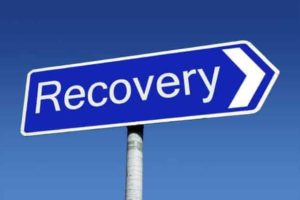Abstract

Many factors go into a treatment plan to help patients suffering from OUD (Opioid use Disorder) (Addiction) but most patients loved ones and even Doctors never connect the dots of available modalities and piecemeal treatment without understanding the how and why of each phase of successful Opioid Addiction treatment.
Inpatient rehabilitation facilities are very useful but only when properly linked to the other phases and treatment modalities available. Relapse is not failure just a frightening part of the healing process.
Why and when is in-patient residential treatment appropriate vs outpatient and what are the options.
Is it better to go to an inpatient rehabilitation facility versus an IOP (intensive out-patient) or a MAT (medicine Assisted Treatment) program for medicine like Suboxone (Buprenorphine) and Cognitive Behavioral Therapy (CBT)?
An in-patient residential rehabilitation program is a facility where a person who has SUD (substance use disorder) or OUD (Opioid Use Disorder) can go and stay for differing lengths of time in order to get treatment for drug addiction.
There are many variations of residential treatment that focus on different flavors that may appeal to the interests of different people. These flavors or interests are important because they can help with the patients motivation to get out of their rut and find more healthy activities in their life which really does help with addiction. Some focus on music some on horses some are in beautiful parts of the country and are spa like but most are pretty basic and hospital like.
What the rehabs are trying to do is to change the patients environment in order to “start with a clean slate” so to speak. The rules are, no outside contact, very limited visitation, no phones, minimal TV and very limited computer time. In other words, break habits by eliminating them for a while. In addition the patient will be in classes to teach them about addiction as well as their specific situation, one on one therapy sessions to not only get to the root of the problem but also to figure out a pathway away from the addiction lifestyle.
So its like a safe, controlled, learning environment where the patient can regroup and get a reboot or restart to their life with professional help.
They sound great. Do they work?
Studies and personal observation shows that it really depends on the drug(s) involved, the depth of addiction, the motivation of the patient and what the followup plan is after the patient is released.
Currently the residential rehab success rate without an MAT follow up program for Opioid addiction as the primary drug, is terrible. Our experience shows a relapse rate of almost 50% on the very first day of release with a higher than normal overdose rate due to a decrease in tolerance and due to purchasing the needed drugs from an unknown dealer. Another 48% relapse within the first 3 months of release. The success rate increases dramatically when combined with MAT (Suboxone, Buprenorphine, Bunavail, Zubsolv, Sublocade etc) because without these medications, the patient still has the cravings and have had them for their entire stay and its all they can think of upon release. Its like fasting for a month and then being released into a Wendys with a $1 meal deal and being told to never eat anything again. Good luck! The medications give the patient a fighting chance to stabilize emotionally, physically, financially etc.
Most stays are for 28 days due to insurance limits even though studies show that the longer the stay the better the outcome. IOP (Intensive Out Patient) programs are meant to follow up inpatient stays as a way of bridging back into real life but many patients do not continue with IOP. A complication is also that the residential program and its IOP may not be anywhere near where the patient lives and so is inconvenient or impossible. A patient may find a local IOP but will need to make new connections and comfort levels within the new IOP.
An IOP is 3 to 4 hours a day, 4 to 5 days a week over 4 to 6 weeks. Remember that the patient, after the stay, has to go right back into their same triggering environment which can account for the statistic that most patients go through rehab 6 times on average before they succeed or die.
So you may ask, whats the use? What are they good for? Should they even be a part of OUD treatment? If they are going to work, whats the trick?
The answer is that most “Functional Addicts” or people with “Functional OUD” may have jobs, families or other responsibilities that do not allow them to take time off or they may not have the insurance or funds to afford rehab so its not a realistic option.
Once a patient has become non functional i.e. no job, not taking care of themselves or family, cannot or will not stop using or even lost their place to live and will be on the street they may have no other good option. This could also be the reason for needing more than 1 stint in rehab. The first time or 2 the patient may have had no other choice due to family or legal pressure and got nothing out of it because they didn’t want to be there. The next few times may be due to the patient being more mature, the consequences worse and the motivation stronger until finally they resolve to learn and make it work or say screw it and use until an overdose.
The target patient is someone who needs to stay away from their bad environment until they can regroup and who has committed to MAT therapy immediately following release. Even better is a facility that will allow the patient to be on buprenorphine while in rehab so they are not always craving while trying to restructure their life.

There is a full spectrum of types of facilities some really nice and some not so really nice and the are located all over the place. Costs start at about $1000 per day and can go way above that. There are only a few that take medicaid and they are not high end but thats not what is important. Most mid level places will take the better insurances but the high end ones will cost a pretty penny out of pocket and of course will keep you for as long as you want to stay and pay.
A patient of age cannot be sent there against their will and they can leave AMA (Against Medical Advice) at any time.
The best outcomes are with motivated patients who go on Buprenorphine prior to entry, who remain on Buprenorphine after release, combined with support of family and a Therapist and who have been able to restructure their lives away from old triggers and develop a new pattern of living. Patient motivation is critical but the after care is even more important for success. We must remember that relapse is not failure but a part of the healing process.
